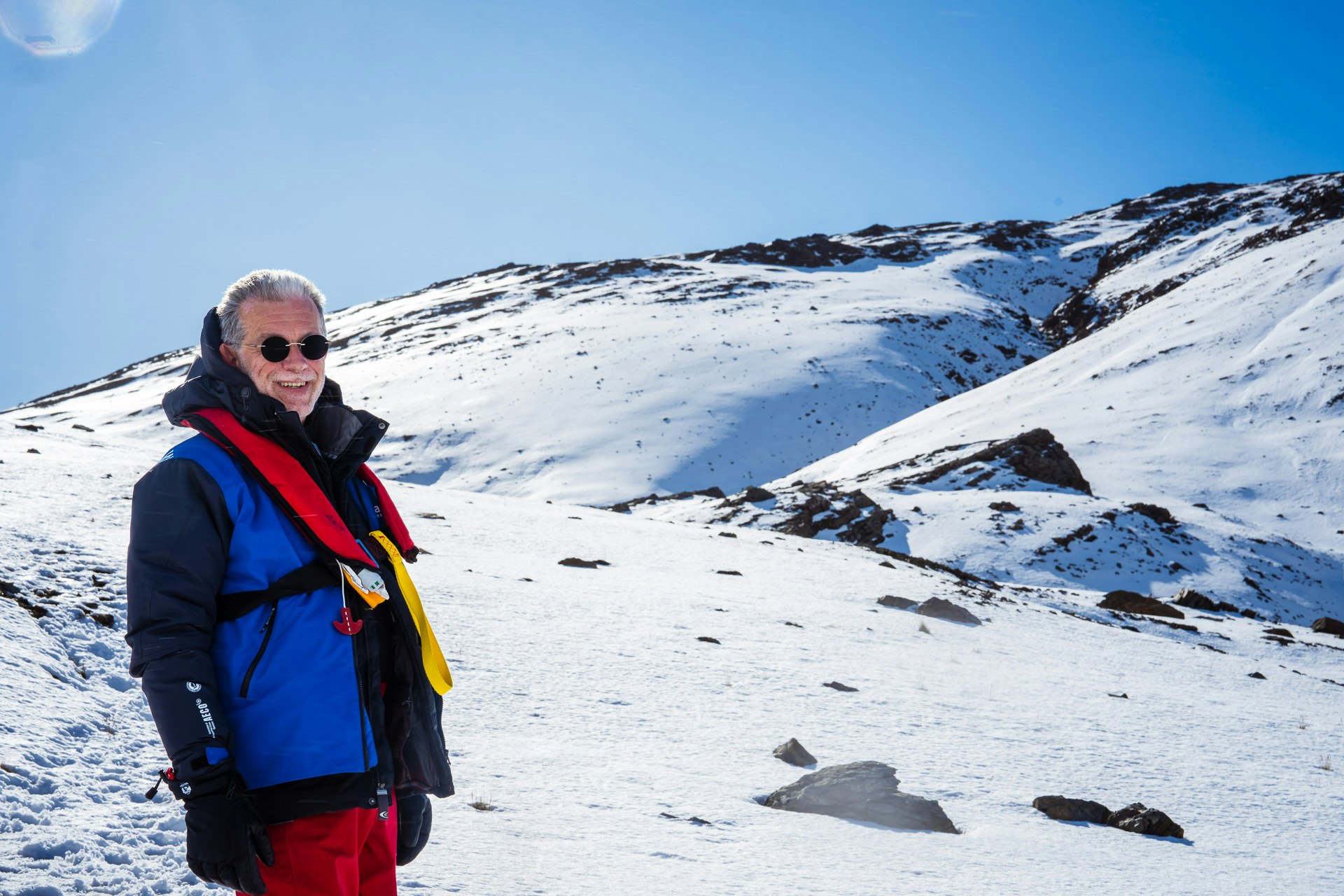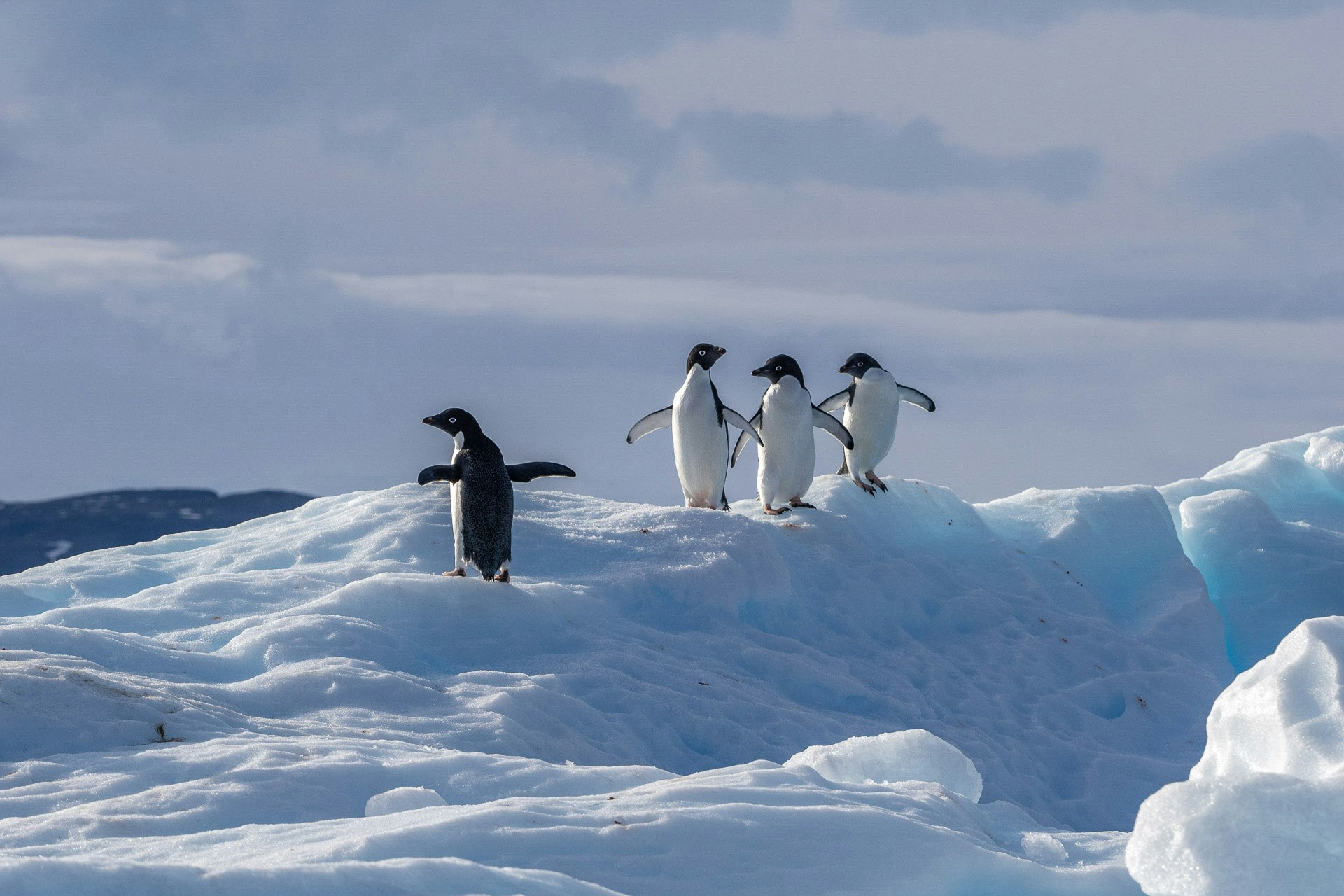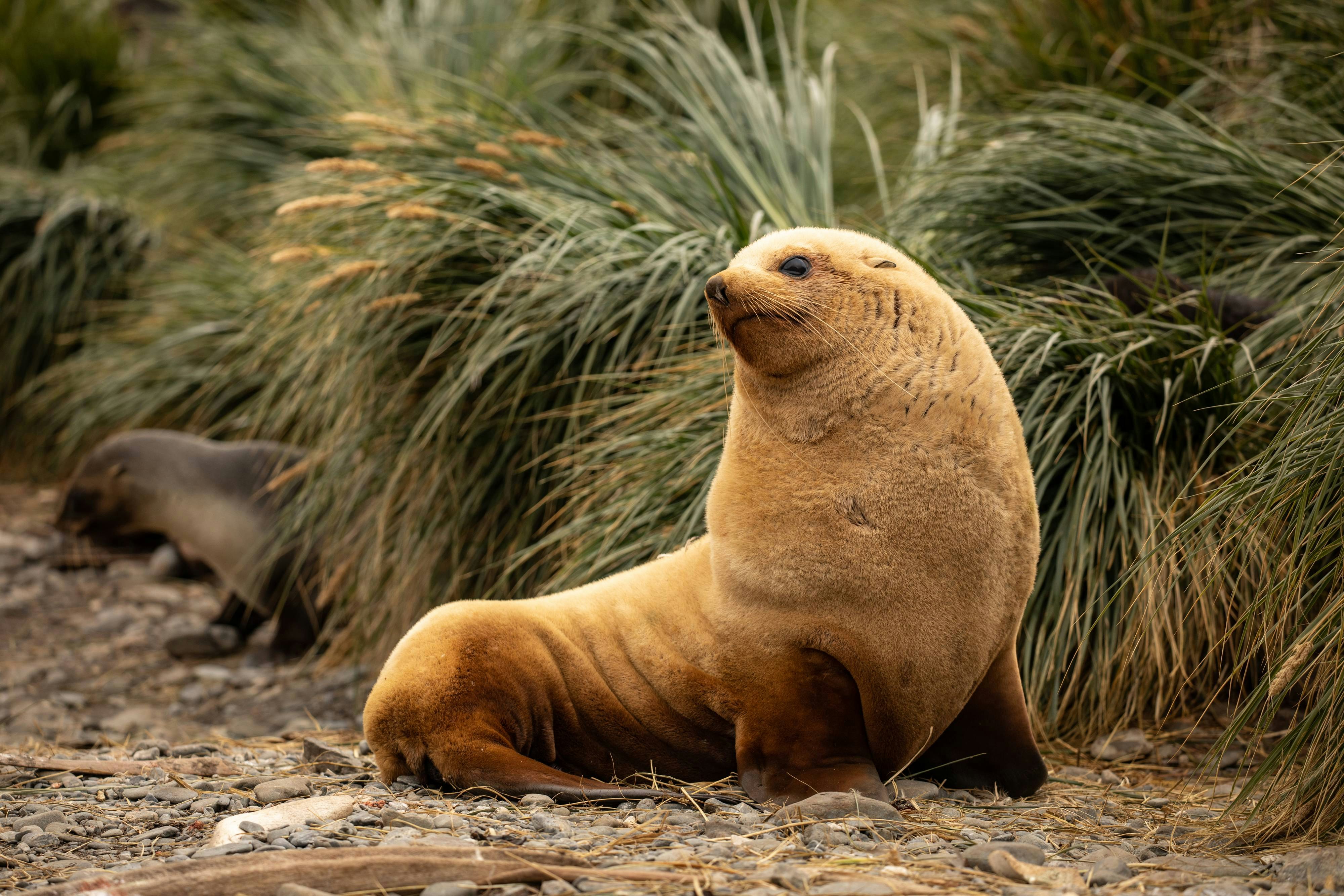Islas Malvinas to the Argentines and the Falkland Islands to the British, the Falklands~Malvinas are teeming with dramatic military history alongside wildlife.
On your Falkland Islands cruise, start to peel back the layers of complex history surrounding this archipelago, dating back centuries.
The fascinating Falkland Islands are true wildlife havens, home to diverse marine life and seabirds, including the world’s largest black-browed albatross colony, making the Islands a popular stop for travellers on their way to Antarctica.
Feel the pulse of bustling penguin colonies that thrive among the nutrient-rich waters. Stretch your legs on windswept coastlines dotted with white sandy beaches that seem out of place this far south. Zodiac cruise to rugged coves and pristine bays, stopping to visit charming towns that have a distinctively British character.
Falkland Islands~Malvinas Islands Expeditions 2025/2026
Antarctica Complete
South Georgia & Antarctic Odyssey featuring the South Sandwich Islands
Falkland~Malvinas Islands Wildlife Encounters
Seabirds
The Falkland Islands are a haven for wildlife lovers and have many similarities to the flora and fauna of Patagonia, with land birds making up most of the 63 species found on the islands, including 16 endemic species. The Falkland Islands are a bird-watchers paradise, with over 200 bird species found in the archipelago, many of which can be seen on Aurora Expeditions’ cruises. Two of the most notable species include the black-browed albatross, which can be seen soaring above the rugged coastline, and the Falkland steamer duck, a flightless duck that is commonly found in shallow waters, and the magellanic penguin, other species of interest include the southern giant petrel, the striated caracara, and the falkland thrush, a beautiful bird found only in the Falkland Islands. Bird enthusiasts from around the world visit the Falklands to see these fascinating species in their natural habitat.
Marine Mammals
The Falkland Islands are home to a diverse and fascinating array of marine mammals. Visitors can often spot southern elephant seals basking on beaches or South American fur seals swimming along the coast. The archipelago is also home to a variety of cetaceans, including orcas, southern right whales, and Peale’s dolphins, which can be seen in the surrounding waters on our cruises. Additionally, the Falklands Islands are a breeding ground for several species of seals, including the Antarctic fur seal, the leopard seal, and the Weddell seal. While the islands’ penguin population is well-known, it is worth noting that they are not the only birds to call the Falklands home. The Falkland Islands are a true wildlife enthusiast’s paradise, with an incredible variety of mammals to observe and learn about.
Penguins
The Falkland Islands are renowned for their diverse penguin population, with five different species found throughout the archipelago. The iconic king penguin is a highlight for many visitors, as is the adorable rockhopper penguin, which can be seen hopping up steep cliffs to reach its nesting grounds. Other species include the gentoo penguin, the magellanic penguin, and the macaroni penguin, each with its own unique characteristics and behaviours. Observing these charismatic birds in their natural habitat is a truly unforgettable experience and a must-do for anyone joining our Falkland Islands tours.
Unique Falkland~Malvinas Islands Cruise Experiences
Immersive Activities
Sea kayakers will enjoy skirting the island’s coastlines and exploring the nooks and crannies of bays as they keep an eye out for birds and seals. Meanwhile, snorkellers could luck out with good visibility and slightly warmer waters compared to Antarctic excursions. Keep an eye out for seals, penguins and visiting dolphins. Sea stars and mussels are abound in this nutrient-rich water.
Even though the islands are north of the Antarctic Convergence it can be quite chilly, so on your Falkland Islands tours always remember to layer up before joining Zodiac cruises into rocky coves or along sea cliffs, keeping watch for seals, sea lions, dolphins and porpoising penguins. If conditions allow, voyages include shore excursions to land in the historic town of Stanley, the capital of the Falklands~Malvinas.
Discover Stanley
Visit the capital island of Stanley during our Falkland cruises. Port Stanley is a charming town that has a distinctly British character, with terraced town houses, pioneer cottages and even an iconic red telephone box! Colourful buildings house cosy cafes, English pubs, souvenir shops, a post office and the fascinating Historic Dockyard Museum, with displays on the maritime history of the Falkland Islands, natural history and links to Antarctica.
Gypsy Cove is a must-visit destination in Stanley, Falkland Islands, offering visitors the chance to witness the natural beauty and diverse wildlife of the area in a peaceful setting. In addition to the stunning beach and wildlife, Gypsy Cove is also home to picturesque sand dunes that offer visitors the opportunity to take scenic walks and enjoy panoramic views of the surrounding landscape.
Explore Ashore
Beach landings provide an excellent opportunity to explore the hills and coastlines of the archipelago. You may be lucky to have an excursion to Saunders Island, home to four penguin species, gentoo, magellanic, rockhopper and king penguins living harmoniously and loudly, side by side.
On West Point Island, walk over gentle rolling hills and through tussock grass to make your way to the far side of the island. The walk is well worth the effort so you can quietly view colonies of black browed albatross and rockhopper penguins.
Falkland~Malvinas Islands Cruises FAQs
A Falkland Islands expedition cruise offers a unique opportunity to explore this remote and extraordinary destination. Joining an expedition allows you to immerse yourself in the Falkland Islands’ pristine natural landscapes, abundant wildlife, and rich history. You can witness remarkable seabird colonies, penguin rookeries, and seals, all while enjoying expert-guided tours and engaging in exciting included and add-on activities, from kayaking to snorkelling to photography.
Where are the Falkland Islands?
The Falkland~Malvinas Islands are a wildlife lover’s paradise, offering a rich tapestry of species from seabirds to marine mammals.
These islands are home to over 200 bird species, making them a bird-watcher’s dream. During your Falkland Islands expedition, you’ll be treated to breathtaking sights of diverse birdlife, including the iconic black-browed albatross gracefully soaring above the rugged coastline and the flightless Falkland steamer duck..
Marine mammal enthusiasts won’t be disappointed either. The Falkland Islands boast an impressive variety of marine mammals. From southern elephant seals leisurely basking on pristine beaches to South American fur seals elegantly navigating the coastal waters, your encounters are bound to be memorable.
And the excitement doesn’t end there. The surrounding waters are home to orcas, southern right whales, and Peale’s dolphins. Observing these creatures in their native environment is a highlight of Falkland Islands tours.
But it’s the penguins that often steal the show. The Falkland Islands host five different penguin species, each with its own distinct characteristics. If you’re lucky, You you can witness the majesty of king penguins, watch rockhopper penguins adorably hopping up steep cliffs, observe the gentoo penguin’s charming antics, admire the magellanic penguin’s grace, and marvel at the macaroni penguin’s unique personality.
The optimal time for a Falkland Islands expedition is during the southern summer, which spans from October to March. This season offers milder weather, abundant wildlife, and the chance to explore the Falkland Islands’ stunning terrain and remote destinations.
The Falkland Islands are celebrated for their pristine natural beauty, unique wildlife, and rich history.
With an incredible diversity of birdlife, captivating landscapes, and the opportunity to observe penguins, seals, and whales, the Falkland Islands offer an unforgettable expedition experience.
The cost of a cruise to the Falkland Islands can vary based on factors like cruise duration, stateroom type , and specific itinerary. You can view fares for all of our Falkland Islands cruises our website or by downloading or ordering our latest Antarctica brochure. See all standard inclusions in your fare here.
When packing for a Falkland Islands cruise, it’s essential to prepare for the region’s changeable weather. Include essentials like waterproof trousers, plenty of warm layers, and, of course, a camera to capture the islands’ breathtaking landscapes and wildlife.
You can borrow a pair of sturdy muck boots for shore excursions, and each passenger aboard our Antarctic expeditions will receive an expedition jacket to keep when they board the ship. However, you’ll need to ensure you pack the correct cold and wet weather gear for your landings.
Some people like to take a nicer outfit for the captain’s welcome and farewell drinks, but formal clothing is not necessary.
The Falkland Islands encompass an area of approximately 7,500 square km, making them larger than Puerto Rico and slightly smaller than the U.S. state of Connecticut.





























